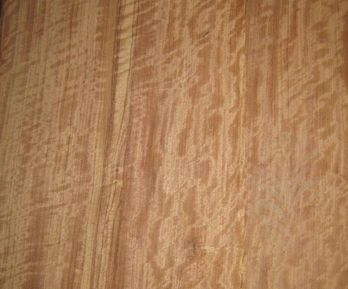 Over the past decade, China’s veneer production sector has seen rapid growth, evolving from an initial reliance on imported veneers to a thriving domestic manufacturing industry. The number of businesses dealing in veneers and edge bandings has surged from just a handful of merchants to nearly 300 today. These companies now source woods from across the globe, showcasing the industry's expansion. While these figures highlight impressive progress, they also mask underlying challenges that pose significant risks to its future.
On one hand, despite a decade of domestic development, China’s veneer industry still lags behind the century-old traditions and expertise of European and American counterparts. For instance, Western veneer firms typically offer only a limited range of products, yet their processes and management practices are highly refined due to decades of accumulated experience. In contrast, China’s domestic veneer producers exhibit inconsistent production technologies. Many companies produce low-quality veneers with minimal added value, failing to meet demand for premium grades like burled or figured wood. Some even resort to basic processing methods, earning meager profits from minimal processing fees. This disparity underscores the need for substantial improvements in production techniques and quality standards.
On the other hand, rising environmental awareness and stricter resource regulations have intensified pressure on timber sourcing. As consumers increasingly favor sustainable products, veneers remain a popular choice for eco-conscious buyers. Yet, this growing demand presents both opportunities and obstacles for domestic producers. The escalating cost of raw materials is another pressing issue. Currently, only about 70% of a cubic meter of raw wood chips are usable in veneer production, and further losses occur during processing, reducing overall material efficiency to roughly 60%. Unfortunately, many domestic manufacturers overlook this inefficiency, instead focusing solely on producing ever-thinner veneers—a strategy that fails to address the root problem of waste.
Addressing these issues requires a comprehensive approach. Improving raw material utilization, enhancing enterprise management, and investing in advanced technologies are critical steps toward ensuring the long-term viability of China’s veneer industry. Failure to tackle these challenges could hinder future growth and compromise the sector’s competitiveness on the global stage.
Looking ahead, domestic producers must adopt innovative strategies to bridge the gap between their current capabilities and international benchmarks. By prioritizing sustainability, efficiency, and product quality, they can position themselves as leaders in the global veneer market. Only then can China’s veneer industry truly capitalize on its potential and overcome the hurdles it currently faces.
Over the past decade, China’s veneer production sector has seen rapid growth, evolving from an initial reliance on imported veneers to a thriving domestic manufacturing industry. The number of businesses dealing in veneers and edge bandings has surged from just a handful of merchants to nearly 300 today. These companies now source woods from across the globe, showcasing the industry's expansion. While these figures highlight impressive progress, they also mask underlying challenges that pose significant risks to its future.
On one hand, despite a decade of domestic development, China’s veneer industry still lags behind the century-old traditions and expertise of European and American counterparts. For instance, Western veneer firms typically offer only a limited range of products, yet their processes and management practices are highly refined due to decades of accumulated experience. In contrast, China’s domestic veneer producers exhibit inconsistent production technologies. Many companies produce low-quality veneers with minimal added value, failing to meet demand for premium grades like burled or figured wood. Some even resort to basic processing methods, earning meager profits from minimal processing fees. This disparity underscores the need for substantial improvements in production techniques and quality standards.
On the other hand, rising environmental awareness and stricter resource regulations have intensified pressure on timber sourcing. As consumers increasingly favor sustainable products, veneers remain a popular choice for eco-conscious buyers. Yet, this growing demand presents both opportunities and obstacles for domestic producers. The escalating cost of raw materials is another pressing issue. Currently, only about 70% of a cubic meter of raw wood chips are usable in veneer production, and further losses occur during processing, reducing overall material efficiency to roughly 60%. Unfortunately, many domestic manufacturers overlook this inefficiency, instead focusing solely on producing ever-thinner veneers—a strategy that fails to address the root problem of waste.
Addressing these issues requires a comprehensive approach. Improving raw material utilization, enhancing enterprise management, and investing in advanced technologies are critical steps toward ensuring the long-term viability of China’s veneer industry. Failure to tackle these challenges could hinder future growth and compromise the sector’s competitiveness on the global stage.
Looking ahead, domestic producers must adopt innovative strategies to bridge the gap between their current capabilities and international benchmarks. By prioritizing sustainability, efficiency, and product quality, they can position themselves as leaders in the global veneer market. Only then can China’s veneer industry truly capitalize on its potential and overcome the hurdles it currently faces.
Metal bonded diamond grinding can be metal bond diamond grinding wheel or metal bond CBN Grinding Wheels. Diamond and CBN are two types of super abrasive types. CBN abrasive is mainly used for high speed steel, mould steel, HSS steel which include big amount of iron portion.
Metal bond Grinding Wheels have advantage of long life time and high precision conformity.They can also be made to all types of Grinding Heads and drilling bits. Kemei produces all these metal bond grinding tools. If you need any type ,please contact us.
Due to different material have different hardness and toughness, we offer full sizes diamond cutting wheels in metal bond, resin bond and nickel-based electroplated bond. The perfect cutting ability give very nice surface, no chipping or broken. We always offer you the most suitable grinding solutions and grinding wheels.
Metal Bond Diamond Wheels,Electroplated Diamond Wheel,Metal Bonded Diamond Tools,Metal Bonded Diamond Cutting Wheels
Henan Jinlun Superhard Material Co., Ltd , https://www.jinlunsuperhard.com